View basket (0 items $0.00)
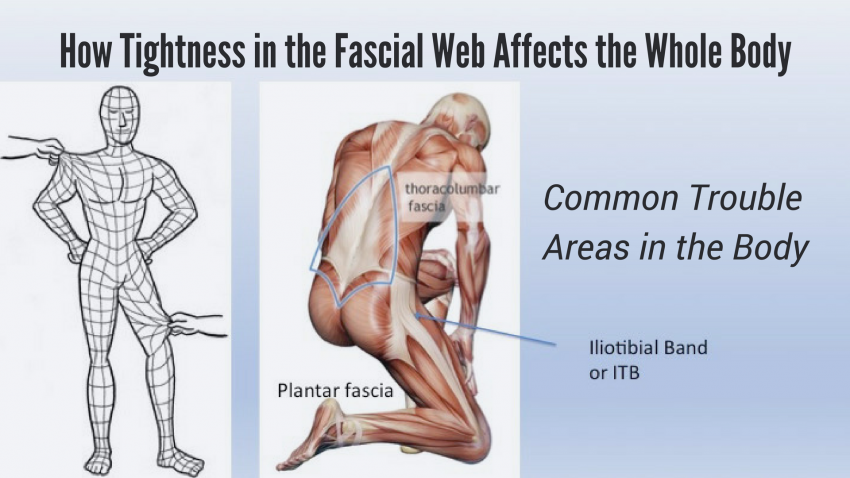
Restoring Wholeness: The Art of Self Myofascial Release
Self-myofascial release is a technique that has been around for more than 50 years, but it has recently come to prominence in large part due to the pioneering work of YogaTuneup Founder Jill Miller.
In the same way as there are many styles of yoga, there are many approaches to self-myofascial release. For the past 30 years, YogaU teacher Ellen Saltonstall has studied with Elaine Summer, founder of the Kinetic Awareness of self-myofascial release. In this interview, Ellen shares key principles for this important work and how it can enrich our yoga practice.
YogaUOnline: You’ve been working with myofascial release techniques for more than four decades. What first triggered your interest in this work?
Ellen Saltonstall: I started out studying myofascial release over forty years ago with Elaine Summers, who developed a technique called d Kinetic Awareness using rubber balls. I was a dancer at the time, so I used it as a self-care technique to deal with injuries and prevent new ones. I worked with Elaine for many, many years, but eventually developed my own approach to the work.
As I worked with developing this method, I found that it not only makes you more expressive in an artistic way, but also more able to be embodied fully as a person, more integrated in the emotional realm, mental realm, and in every way – so it is embodiment as a full practice.
That’s why I sought for a new name for the method and came up with Bodymind Ballwork, because it’s very direct. It tells you that it’s an approach to myofascial release that involves mind and body as a unit.
YogaUOnline: The phrase, “Self Myofascial Release” is a buzzword these days. ‘Myo’ of course refers to muscles and the second part refers to the fascial web of the body, correct? So, it’s a technique that works with both muscles and fascia, correct?
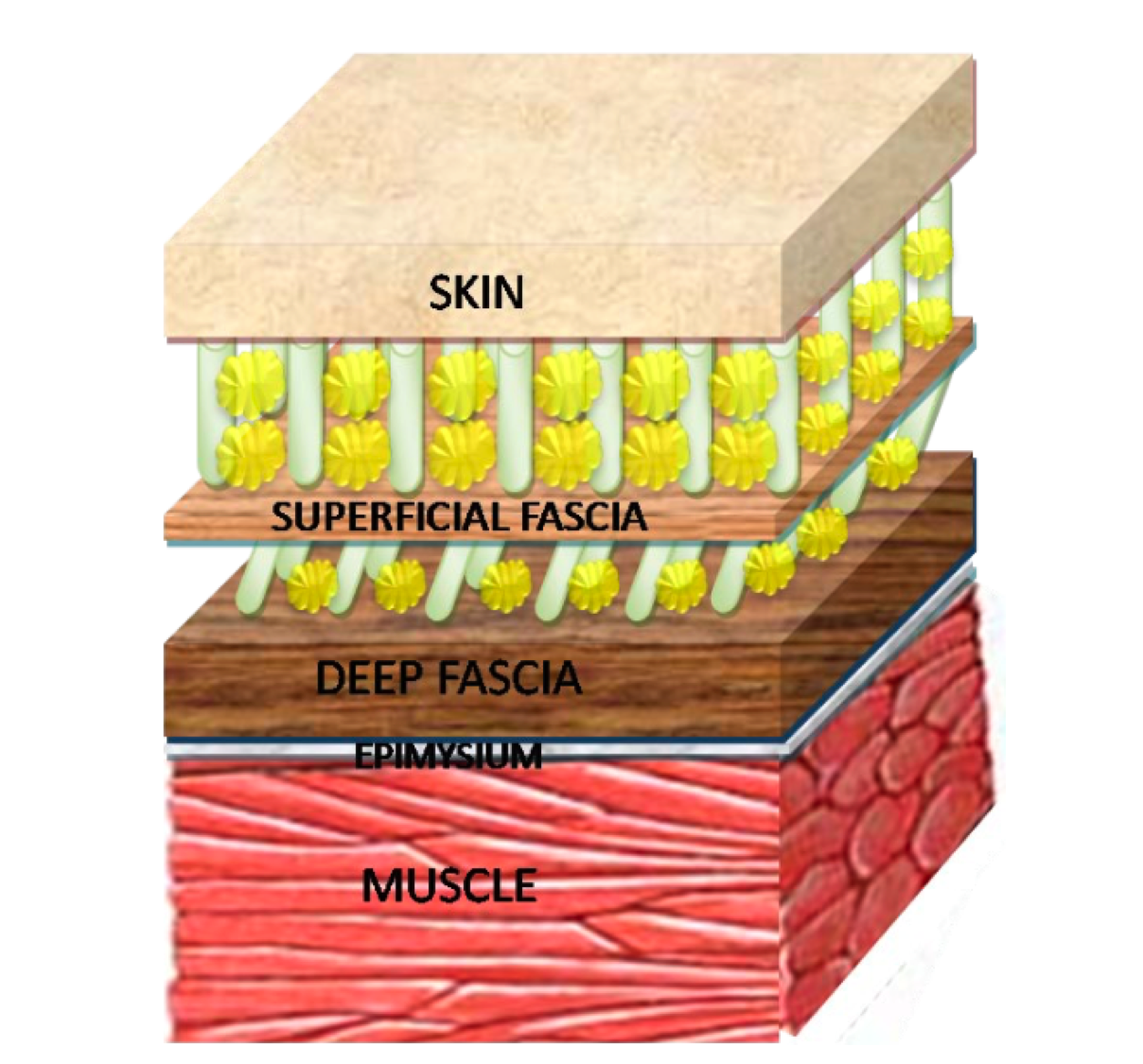
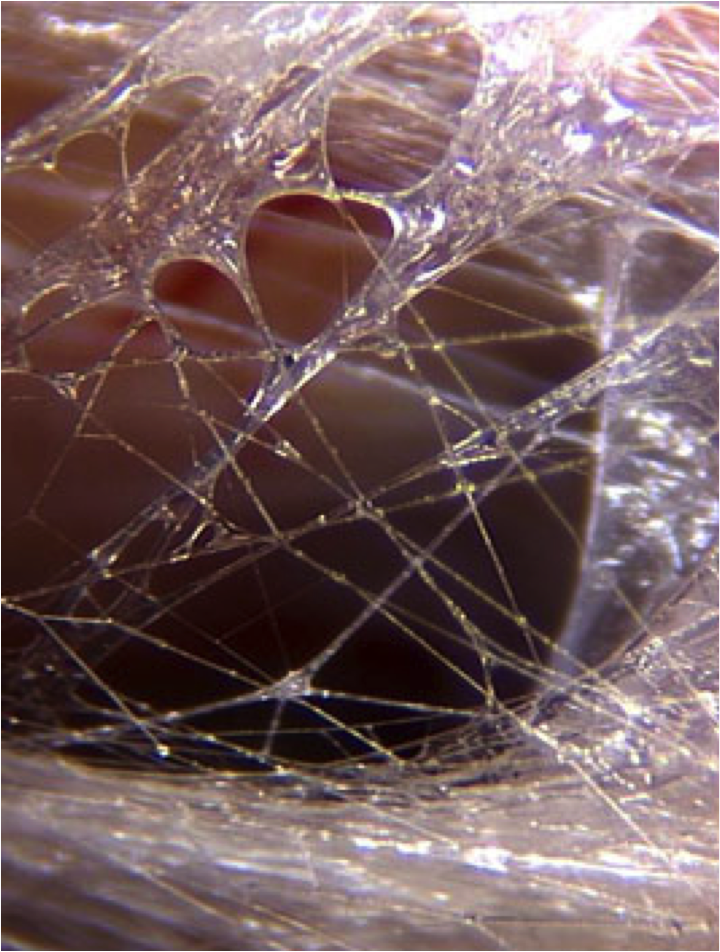 Ellen Saltonstall: Yes, the term acknowledges that you really can’t separate the two. The fascial web is a bodywide web of connective tissue. It wraps around the individual muscle fibers, bundles of muscles fibers, around muscles themselves, and around groups of muscles. So it’s involved in pretty much any structure in the body --muscles, organs, glands, and neurovascular bundles.
Ellen Saltonstall: Yes, the term acknowledges that you really can’t separate the two. The fascial web is a bodywide web of connective tissue. It wraps around the individual muscle fibers, bundles of muscles fibers, around muscles themselves, and around groups of muscles. So it’s involved in pretty much any structure in the body --muscles, organs, glands, and neurovascular bundles.
The fascia has really rich sensory nerve supply, and is always giving us information, always coordinating our movements; transferring force all throughout the body, even from head to toes.
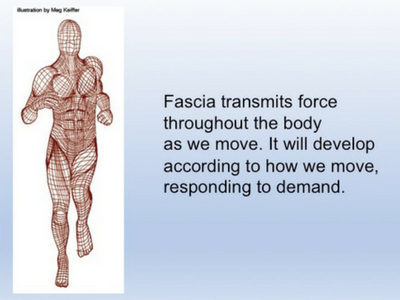 When we do body therapy, it is essential to involve the fascial web; there’s no other way to see how all parts of the body relate to each other, and when we work with the fascial web, we work with all parts of the body.
When we do body therapy, it is essential to involve the fascial web; there’s no other way to see how all parts of the body relate to each other, and when we work with the fascial web, we work with all parts of the body.
YogaUOnline: We’re familiar with the idea of releasing muscular tension, but the term myofascial release would imply that the fascial web holds tension, as well. Is this correct?
Elle Saltonstall: Yes, it does hold tension because it responds to the stress level in our body, the chemical level of stress in the body. The cells within the fascia can contract, not because we tell them to like we tell our biceps to contract when we lift up a cup of coffee. But they do contract and then they also can release. So the myofascia has that contractibility and also elasticity. The fascinating thing is that we can change the texture and the pliability and the elasticity of our fascia with these techniques.
YogaUOnline: How is that?
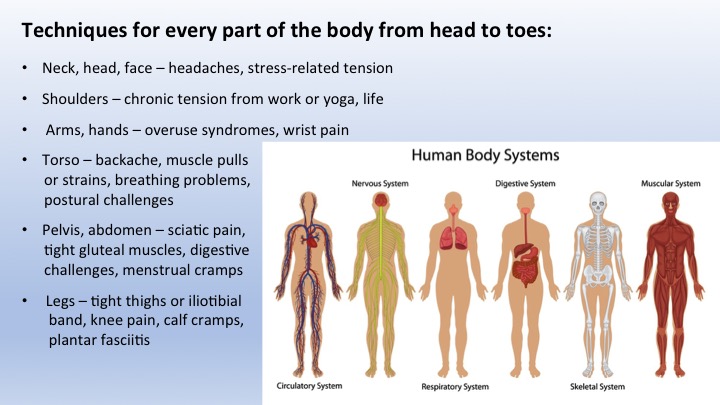 Ellen Saltonstall: There are several things involved. The pressure of the ball creates a nervous system response via the Ruffini endings, which are part of our mechanoreceptor system.
Ellen Saltonstall: There are several things involved. The pressure of the ball creates a nervous system response via the Ruffini endings, which are part of our mechanoreceptor system.
There are other mechanisms involved, but the upshot is that the nervous system calms down, inducing an overall relaxation and parasympathetic response. Additionally, the balls facilitate stretching and release in the particular parts of the body you work on – like tension in the shoulders, or tension in the neck.
You can direct that effect to a particular part of your body really specifically, but you also get this overall relaxation because of the way the nervous system responds to that pressure. It’s wonderful.
YogaUOnline: Naturally, myofascial release techniques are becoming increasingly popular as a way to help relieve stress and chronic pain. Who can benefit from this technique?
Ellen Saltonstall: Yogis, dancers, and athletes all get frequent injuries because we challenge ourselves- whether with crazy poses, athletic pursuits or extreme exertion in a dance performance- and the body has its limits. So sometimes something happens where you get a strain. But also, everyday people can get nagging pains, either because of their posture or their habits of holding emotional tension in the body. They be really helped by myofascial release.
YogaUOnline: Is this something you do regularly over a period of time to get the effect or you do it once?
Ellen Saltonstall: You can do it once and maybe it will give you that immediate relief and maybe it will last. It depends on how long you have carried that tension and how many times you recreate the activity that caused it. Let’s say you had a momentary lapse in your use of your body because you lifted a really heavy box the wrong way. You might get permanent relief from just one session on the balls.
But I always recommend that you do it on a regular basis for prevention and for increasing your body awareness overall, because increasing your sense of yourself as a Bodymind whole is its essence. Our experiences are always lodging in the body and while sometimes that is a great thing, it can also be problematic. If we have blocked places in the body, we might be able to relieve them from an emotional standpoint as well as the physical standpoint. Therefore I recommend regular practice while understanding that people do what they are able to do.
YogaUOnline: In describing the Bodymind Ballwork technique, you also characterized it as a technique for embodiment. Could you elaborate on that?
Ellen Saltonstall: Embodiment is a term I’m interested in because it underscores the fact that we can be fully in the body or we can be carrying out our daily activities without any regard for the body. It is easy to exclusively focus on the intellectual and manual tasks that have to get done without recognizing the ever present, ongoing process telling us how the body is.
Some might say, “I don’t have time for that. I don’t want to know what’s going on.” The prospect of being embodied is not for everybody. However, I would hope that people involved with yoga get a taste of the pleasure and deep enlargement of your consciousness that comes from being aware of your body. In yoga, there are the levels of awareness we have in the body, the Koshas: the physical body, the breath body, the mental body, the wisdom body and the bliss body. I will discuss this more in my new webinar, but these levels of being are all expressed on a moment to moment basis in our physical body.
Embodiment is taking time frequently during the day to remember that and to experience it. It’s grounding and it’s health promoting and is really worth the effort to get into the habit of sensing your own body. Embodiment is being fully alive.
YogaUOnline: An ongoing discussion in the yoga community is about yoga injuries. Is this a way people can help address or prevent injuries?
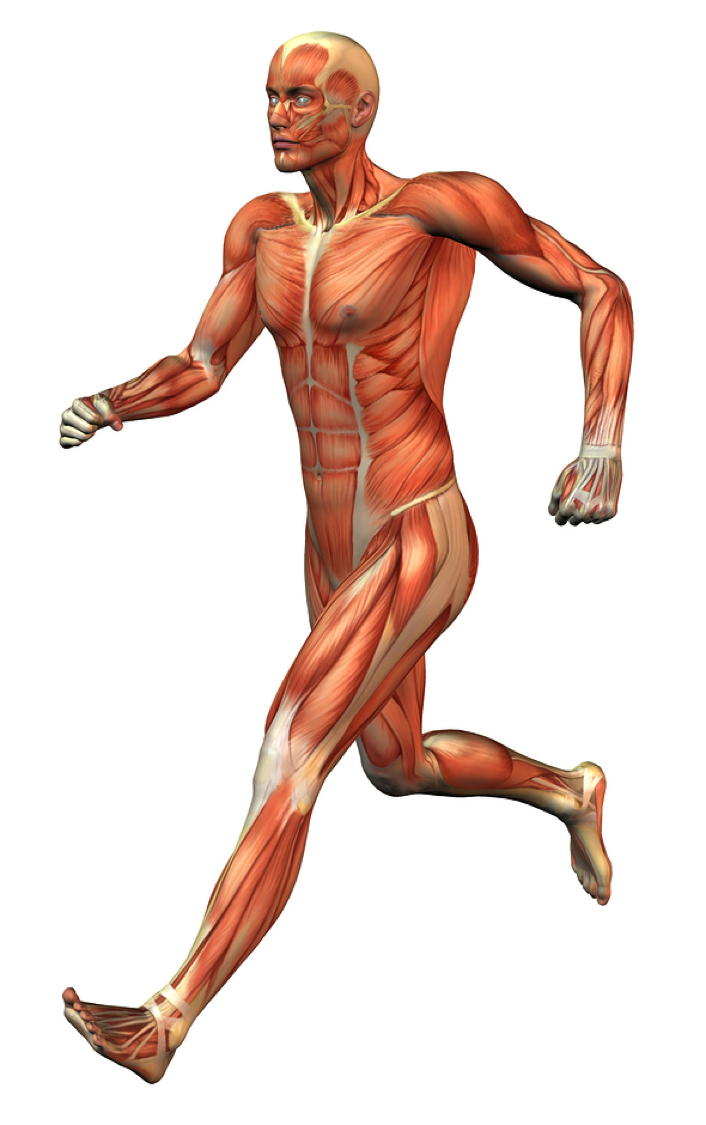 Ellen Saltonstall: Absolutely. This technique is particularly good in terms of balancing parts of the body. For example, think about a yoga practice working on a twist. There are certain parts of your myofascia that have been stretched a lot, and other parts that have been more strengthened. There might also be some imbalance that later develops into an injury. If you do that type of practice once in awhile, then you can balance it out by doing a myofascial release technique. This will make everything a little more balanced for whatever you do next, rather than further reinforcing the residue of some uneven use of the body that you did earlier. This applies to things like going bowling, mountain climbing or sitting all day at a conference; it applies to so many things.
Ellen Saltonstall: Absolutely. This technique is particularly good in terms of balancing parts of the body. For example, think about a yoga practice working on a twist. There are certain parts of your myofascia that have been stretched a lot, and other parts that have been more strengthened. There might also be some imbalance that later develops into an injury. If you do that type of practice once in awhile, then you can balance it out by doing a myofascial release technique. This will make everything a little more balanced for whatever you do next, rather than further reinforcing the residue of some uneven use of the body that you did earlier. This applies to things like going bowling, mountain climbing or sitting all day at a conference; it applies to so many things.
YogaUOnline: Logistically, it can be difficult to reach certain parts of the body for self myofascial release. Is that something you will be showing in your upcoming course?
Ellen Saltonstall: Everybody is unique. There are several ball techniques being done today, but one difference with my technique is that I utilize a wide variety of balls. I do that because there is a wide variety of people who come to me. Some people like strong pressure, some people like gentle pressure, some necks can handle a large ball or some people’s necks prefer a smaller ball. I also have different shapes. I can vary the technique according to a person’s needs and I think that is very important. The practice session of the course will include a description where I explain how to find the tight places and work with them.
YogaUOnline: It sounds like a great course, Ellen. Are there any other things people should be aware of in terms of the benefits they will gain from the course?
Ellen Saltonstall: There are two things that I would like to add. The first is the lineage of this practice because many people think, “Oh, Ballwork has just come about in the last ten years.” In actuality, the antecedents to this method go back almost a hundred years. I’m looking forward to telling people about those forerunners.
The second area is the different types of balls. The sizes of the balls and the texture of the balls can make it easier to get into the difficult areas, such as the little tiny areas beside your shoulder blades or in the side of your neck. If you only have one type of ball, you could do a lot but the variety of body shapes and body areas requires a variety of balls.
YogaUOnline: Wonderful. Thank you so much. It sounds like an exciting and informative course.
Featured Courses










